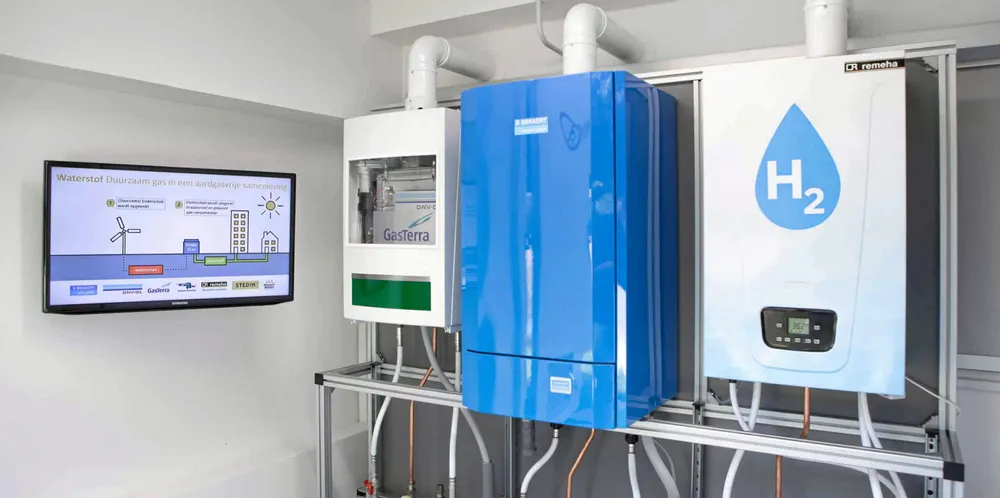‘Using blue hydrogen for heating would lock in fossil fuels for decades while cutting emissions by only 65%’
It is “difficult to see” how blue H2 can be used as a fuel for heating, given the existence of renewables-powered electric options, says UK government-funded Oxford University study

Natural-gas distributors and boiler makers, among others, have been lobbying governments to sanction and subsidise the replacement of methane in our gas grids with clean hydrogen so that they can carry on heating our homes and businesses for decades to come.
An Oxford University study, funded by the British government’s UK Research and Innovation agency, took a deep dive into the question and concluded — in diplomatic terms — that it was “difficult to see how [blue hydrogen] can be used to fuel a significant fraction of heat, given the near zero carbon and other GHG [greenhouse gas] emission alternatives of renewable and nuclear energy”.
This is partly because, due to the lower energy density of hydrogen by volume, compared to methane, blue hydrogen would actually require about 40% more natural gas to produce the same amount of heat — and therefore 40% more upstream methane emissions.
The study describes the global warming potential (GWP) from blue hydrogen — what it terms “SMRCCS” (steam methane reforming carbon capture and storage) — as only a 65% reduction compared to natural gas.
It also points out that using blue hydrogen would lead to a long-term lock-in of natural-gas imports, along with continued greenhouse gas emissions, price instability and security-of-supply issues.
“To widely implement SMRCCS hydrogen might take 20-30 years and, to make it a worthwhile investment, it should operate for, say, 30 or 50 years, taking us to 2050-2100; but before or by this time, because of gas availability, prices or tighter net greenhouse gas emission targets, heating might have to be switched again. Per unit of heat delivered, as compared to a gas boiler, SMRCCS increases natural gas consumption by about 40%, therefore increases imports.”
The report adds that natural gas prices are expected to rise over the long term, while the price of renewable energy production is falling.
“The electricity-dominated route has hard problems, especially renewable variability, but electricity systems with connected storage and long-distance transmission are being deployed to address these problems,” the authors write.
“All the technologies for a renewable electric heat route are commercially established and serve millions of consumers worldwide, and the costs of renewable wind and solar, because of fast development cycles and mass production, are falling steadily — a contrast with historic chaotic and projected increasing gas prices and cost uncertainties for SMR, hydrogen networks and boilers, for which there are no scale systems globally.
“The renewable route is sustainable indefinitely, and once installed, there would be no need for further large scale system change, unlike for gas.”
The study assumes a carbon capture rate of 85% for SMR, the standard process for hydrogen production globally, but does not consider the more energy-intensive autothermal reforming process, which can reach higher rates of capture of up to 98% but is only currently being used to produce syngas (a combination of hydrogen and carbon monoxide).
(Copyright)